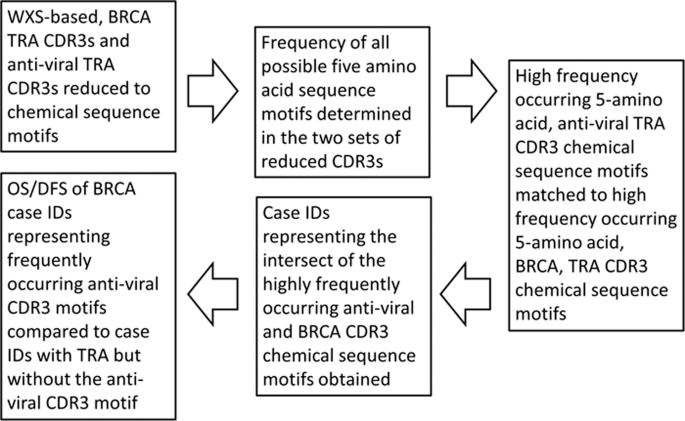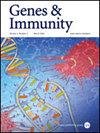肿瘤驻留的 TRA 抗病毒 CDR3 化学序列图案与乳腺癌的较佳预后有关
IF 5
3区 医学
Q1 GENETICS & HEREDITY
引用次数: 0
摘要
某些癌症(如宫颈癌)与病毒感染之间的联系非常密切和明确,而其他癌症则与病毒感染之间存在联系,这些联系要么是并发症,要么是以尚未完全明了的方式驱动癌症,例如 "打了就跑 "的可能性。为了进一步了解病毒感染与乳腺癌进展之间的联系,我们在乳腺癌患者 TRA 重组的 CDR3 中确定了已知抗病毒 T 细胞受体α链(TRA)互补决定区-3(CDR3)氨基酸序列的化学特征,并评估了这些特征与患者预后之间的关联。这种新范式的应用表明,肿瘤衍生的抗CMV CDR3化学序列基序与乳腺癌患者更好的预后有一致的关联,但并不表明有机会为其他癌症类型建立风险分层。有趣的是,未检测到 TRA 重组的乳腺癌样本比未检测到抗 CMV CDR3 的样本预后更好,这进一步丰富了快速发展的一系列结果,从而区分了积极的和可能有害的癌症免疫反应。本文章由计算机程序翻译,如有差异,请以英文原文为准。


Tumor resident, TRA anti-viral CDR3 chemical sequence motifs are associated with a better breast cancer outcome
While for certain cancers, such as cervical cancer, the link to viral infections is very strong and very clear, other cancers represent a history of links to viral infections that are either co-morbidities or drive the cancer in ways that are not yet fully understood, for example the “hit and run” possibility. To further understand the connection of viral infections and the progress of breast cancer, we identified the chemical features of known anti-viral, T-cell receptor alpha chain (TRA) complementarity determining region-3 (CDR3) amino acid sequences among the CDR3s of breast cancer patient TRA recombinations and assessed the association of those features with patient outcomes. The application of this novel paradigm indicated consistent associations of tumor-derived, anti-CMV CDR3 chemical sequence motifs with better breast cancer patient outcomes but did not indicate an opportunity to establish risk stratifications for other cancer types. Interestingly, breast cancer samples with no detectable TRA recombinations represented a better outcome than samples with the non-anti-CMV CDR3s, further adding to a rapidly developing series of results allowing a distinction between positive and possibly harmful cancer immune responses.
求助全文
通过发布文献求助,成功后即可免费获取论文全文。
去求助
来源期刊

Genes and immunity
医学-免疫学
CiteScore
8.90
自引率
4.00%
发文量
28
审稿时长
6-12 weeks
期刊介绍:
Genes & Immunity emphasizes studies investigating how genetic, genomic and functional variations affect immune cells and the immune system, and associated processes in the regulation of health and disease. It further highlights articles on the transcriptional and posttranslational control of gene products involved in signaling pathways regulating immune cells, and protective and destructive immune responses.
 求助内容:
求助内容: 应助结果提醒方式:
应助结果提醒方式:


